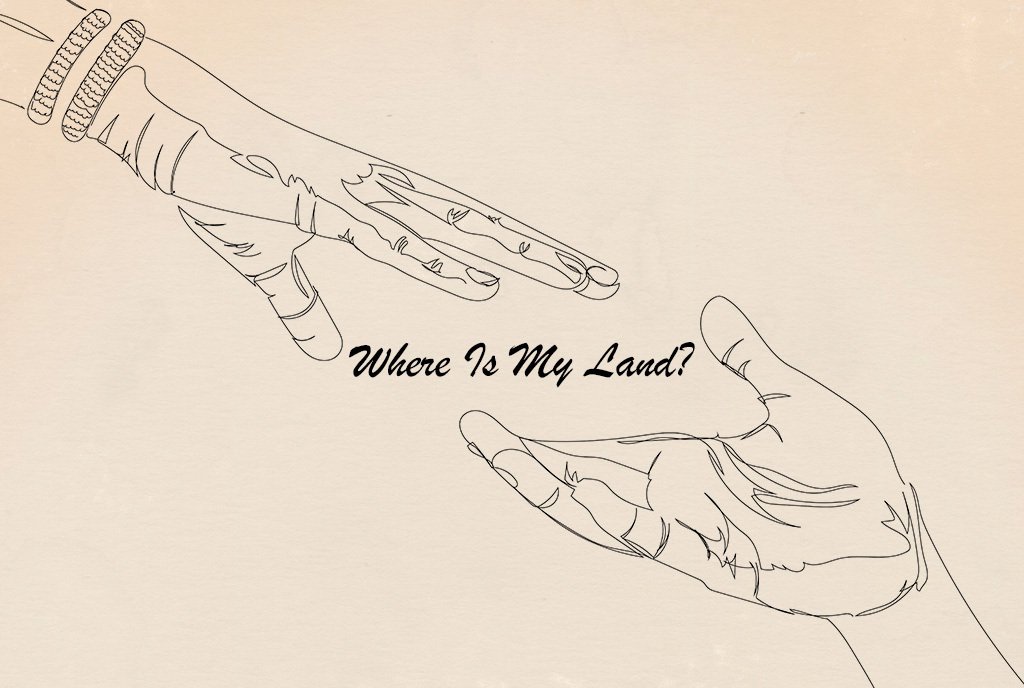![]() When the Fidelity Charitable Gift Fund was established in 1991, it’s entrance onto the philanthropic scene was met with much consternation by community foundations. But recent statistics would suggest, at least on the surface, that its presence may drive giving in a good direction. NPQ’s Rick Cohen recently discussed the Gift Fund’s recent track record with Fidelity Charitable Gift Fund CEO Sarah Libbey.
When the Fidelity Charitable Gift Fund was established in 1991, it’s entrance onto the philanthropic scene was met with much consternation by community foundations. But recent statistics would suggest, at least on the surface, that its presence may drive giving in a good direction. NPQ’s Rick Cohen recently discussed the Gift Fund’s recent track record with Fidelity Charitable Gift Fund CEO Sarah Libbey.
The mission of the Fund is to “make giving simple and effective.”
In the past 12 months the assets in the Fidelity Charitable Gift Fund grew by $1.2 billion, a 20 percent increase over the previous 12 months and its grantmaking grew by $1.1 billion, an increase of 9 percent. This growth was, to put it mildly, unusual among philanthropic institutions. In 2009 the Chronicle of Philanthropy’s Philanthropy 400 ranked Fidelity as the nation’s third largest charity based on the amount of money raised from private sources. With grantmaking topping $1 billion, Fidelity would typically rank as the nation’s second largest grantmaker, following Gates and leading Hewlett, Kellogg, and MacArthur. Fidelity Charitable Gift Fund grantmaking by itself equals the cumulative grantmaking of the nation’s top six community foundations.
SUBSCRIBE | Click Here to subscribe to THE NONPROFIT QUARTERLY for just $49 >>
The Fidelity Charitable Gift Fund, a nonprofit, is sponsored by the mammoth mutual fund company, Fidelity Investments, and it manages donor-advised funds which act, in many cases, like mini- foundations within a larger corporate structure.
Fidelity is, of course, a huge institutional presence among mutual fund companies, offering five of the top 25 mutual funds in the nation, according to the Wall Street Journal’s MarketWatch. Generally, depending on who is counting, it is somewhere in the top three mutual fund companies, along with the Vanguard Group and the American Funds, ranked by assets.
Though the Gift Fund has been in existence for 19 years, most people don’t know how a national donor advised fund manager like Fidelity works and even less how to get their favorite nonprofits in line to share in that grant outflow.
Mission of the Fidelity Charitable Gift Fund
According to Libbey, the mission of the Fund is to “make giving simple and effective.” Most nonprofits are accustomed to grantmakers with a strategic theme or purpose—education or health, for example—or a community or regional focus. But Fidelity exists to make charitable giving easy, fast, flexible, and inexpensive.
Fidelity seems dedicated to a low barrier approach to its donor-advised funds, recently lowering the minimum level for a donor’s investment for setting up a fund down to $5,000. It has, according to Libbey, also entirely eliminated any minimum level required for adding to a donor-advised fund and lowered the minimum size grant to $50.
Where do donors come from?
One would think that Fidelity gets the overwhelming majority of donors from its current mutual fund investors, since Fidelity is the largest family of money funds. But contrary to the common wisdom that the Gift Fund exists almost exclusively to help Fidelity keep funds under their own management, Libbey reports that a majority of Gift Fund donors are not current business clients of the investment side of Fidelity.
Low touch—lots of donor access
Most donors open their Fidelity donor-advised fund accounts with a paper application, but then make more than 70 percent of their transactions online through the Fidelity Web site. Once in the system, donors can see online the history of their accounts and investments, a grants page with their current grants and a pie chart of the types of nonprofits they’ve previously assisted that can be compared with previous years’ grants. They can also conduct their charitable giving at any time of the day or night online. According to Libbey, the online charitable giving capability is the feature donors like the most.
This amounts to a lot of Internet-based charitable transactions. Fidelity has some 52,000 donor-advised funds in its portfolio, perhaps one-third of all of the donor-advised funds in the nation. The more than $1 billion in giving through more than 298,000 grants reflects the significant investment Fidelity has made in facilitating charitable giving.
Donor-advised funds are not “named” foundations, but Libbey reports that only a small percentage of donations from Fidelity-managed funds are given anonymously though they have the option. So how can nonprofits get in front of these donors for pitches?
Less access for nonprofits
For Fidelity donor advised funds, you don’t send in applications or make phone calls asking for grants. Libbey says the people behind donor-advised funds are “very self directed.” According to Libbey “they come to us knowing who they are loyal to and who they give to.” She describes the donors’ accounts at Fidelity as evidence that the donors are “very organized and have a structured giving approach.”
Sign up for our free newsletters
Subscribe to NPQ's newsletters to have our top stories delivered directly to your inbox.
By signing up, you agree to our privacy policy and terms of use, and to receive messages from NPQ and our partners.
The Fidelity model is very low-cost because their investment has been devoted to the relatively inexpensive and remarkable online interface providing ease and speed for donors. As Libby notes, “we really don’t provide advice. We provide education and tools, and to date that’s what the donors look to because of their self-directed nature.”
What you can do
To be visible to Fidelity’s donors, or to the donors behind any donor advised funds for that matter, Libbey has some specific suggestions that adhere to some old saws of effective fundraising. Fidelity’s own survey of its donors suggests that they are likely to give 10 times more money to groups where they volunteer than to others. They want to volunteer using specific skill sets, so Libbey strongly advocates nonprofits designing smart volunteering opportunities to attract potential donors.
She also recommends that nonprofits learn and use the language of donor advised funds. She cites as an example the language on pledge cards at nonprofits’ fundraising events, that usually provide a space for potential donors to write in a credit card number, but miss an opportunity by failing to provide a check-off box for a donor to pledge from a donor-advised fund.
Fidelity donors, Libbey says, tend to rely on GuideStar for their due diligence research, and Fidelity prominently features GuideStar as a tool on the Fidelity Web site. Libbey advises, “You ought to make sure you like the way you’re presented on GuideStar, you have to make sure that the message on GuideStar is the way you want it to be, because that’s what donors see.”
What Fidelity donors are giving more to
The evidence is that Fidelity donors are, as Libbey suggests, smart and committed. For example, with access to the Fidelity Web interface, Fidelity donors were able to quickly respond to the disaster in Haiti. The earthquake occurred at 4:53 on the afternoon of January 12th. According to Libbey, Fidelity processed its first grant of Haitian relief at 7:00 pm that evening, the first of many adding up to $13 million in Haitian earthquake relief.
But there’s more. In the year of the recession, when frontline human service nonprofits were facing the perfect storm of increased service demands and decreased government and charitable support, Fidelity donors responded. Libbey notes that “in 2009 compared to 2008, the amount granted to human services increased 25 percent.” She also says “grants going to unrestricted purposes increased to 43 percent in 2009 compared to 36 percent in 2008.” Both increases are laudable in general and in particular during a recession.
Relatively high payout level
Compared to institutional foundations, one aspect of Fidelity operations is particularly admirable. Year in and year out for the past decade, according to Libbey, Fidelity donors grant out 25 percent of their fund assets. This high level of payout means that notwithstanding criticisms that donors to advised funds get to take their charitable deductions at the outset without any requirement of a mandatory annual payout, Fidelity donors grant out a rate five times that of the typical private foundation. Libbey describes this as “the fulfillment of their philanthropic commitment and mission.”
Does establishing an account at Fidelity result in more charitable giving, or simply a shift away from other previous giving? With noticeable pride, Libbey mentions that 70 percent of Fidelity donors report that their personal giving has increased as a result of having a fund at Fidelity. Libbey offers this insight as explanation: “When you establish a giving account (at Fidelity) and you have made the decision to transition from checkbook giving or sporadic giving because you’ve gotten an appeal in the mail . . . it becomes part of the household vernacular . . . the sheer fact of having an account is something that is creating good habits” in the form of increased levels of giving.
Charitable giving may have been helped in the fourth quarter of 2009 when the markets showed signs of strength, giving Fidelity’s donors the confidence that they could continue their past patterns of charitable donations. According to Libbey, 55 percent of donations traditionally come in in the last two months of the year. With the market “uptick” at the end of 2009, the infusion of donations helped Fidelity increase the 2009 total contributions over 2008.
Fidelity’ contributions and lessons
Libbey’s takeaway from the 2009 Fidelity story is somewhat generic, that “giving is alive and well in the United States and donor advised funds are a powerful vehicle to support the American tradition of philanthropy.”
But there is more to this story. There is something about the Fidelity model, created two decades ago, combining scale, one-stop shopping, and an unparalleled technology platform that adds up to a hybrid of charity and philanthropy. It’s not just rich people setting up accounts, but often moderate income donors giving from funds as small as $5,000 through a structured, deliberative process, functioning as philanthropic institutions like foundations. But the donors don’t sit on their money, preferring rather to deliver their dollars to key areas of need and in desired forms (mostly without strings) and more quickly than their private foundations and even most community foundation counterparts.
When Fidelity first applied for the approval of a Fidelity-managed national donor advised fund, the community foundation world protested with litigation and lobbying. It’s now two decades later, but the foundation sector still doesn’t admit the Fidelity Charitable Gift Fund and other national donor advised fund managers affiliated with mutual fund companies into the Council on Foundations club as affiliate, much-less full-fledged members.
It may be time, finally, to recognize an innovative, billion dollar annual grantmaker like Fidelity as an institution as legitimate as the best of the foundation lobby’s longtime foundation standard bearers.












